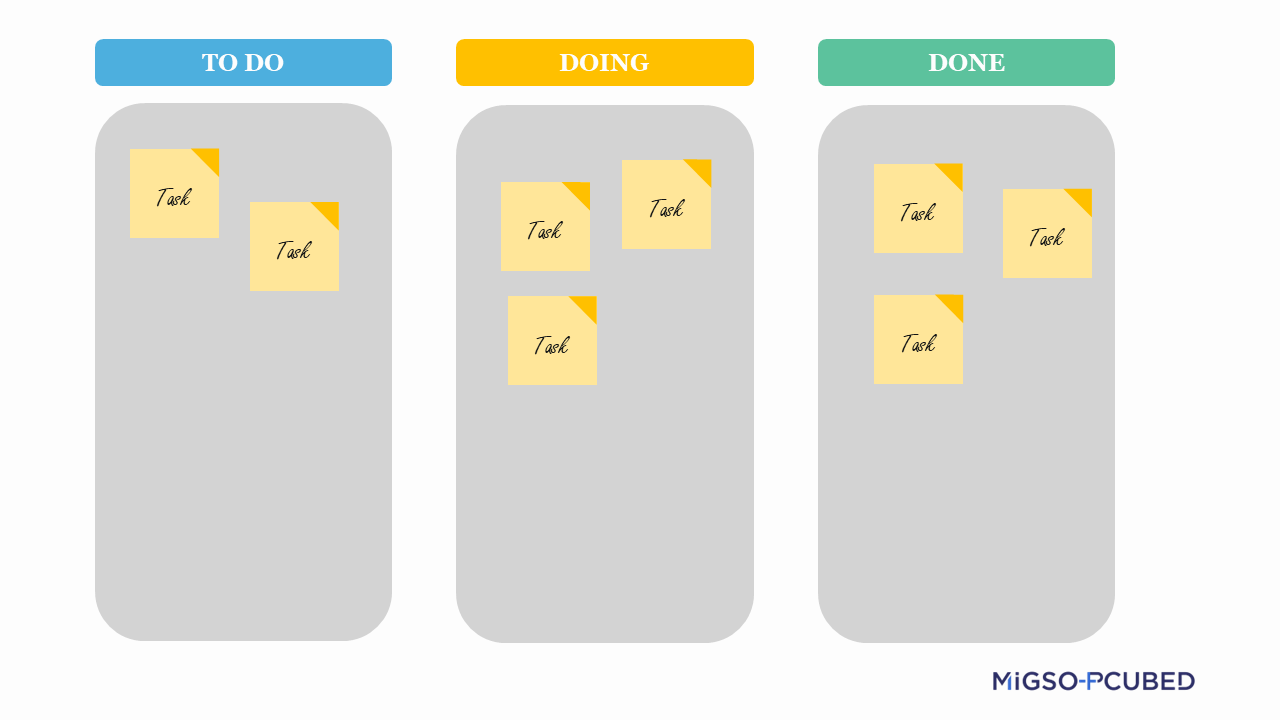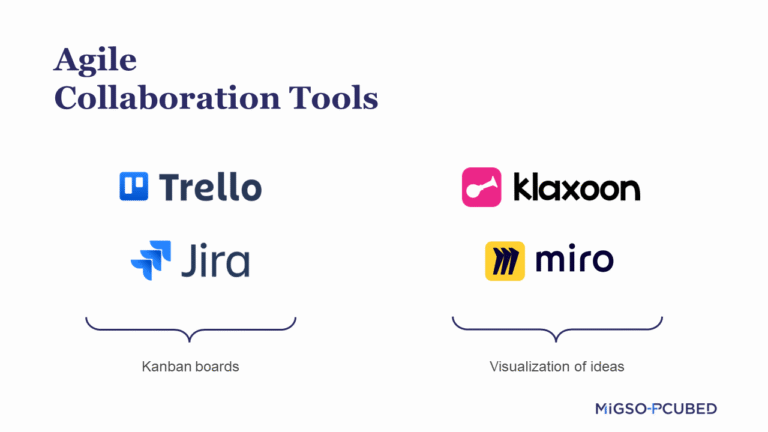Applying Agile Practices in Waterfall Projects
In the world of project management, the Waterfall (or Predictive) approach has long been a widely used methodology. However, as the demands of the business environment rapidly evolve, new ways of working are emerging that seek to optimize efficiency and foster collaboration. In this article, we will explore how to apply agile practices to Waterfall projects to gain the benefits of flexibility, adaptability, and a focus on business value.
Table of Contents
Agile practices that work for Waterfall projects
Agile practices can effectively complement a Waterfall approach, bringing flexibility and adaptability to the process. For example, implementing frequent short meetings to review progress, adopting regular retrospectives to identify improvements and adjustments, or even introducing collaborative tools can significantly improve efficiency and responsiveness in a Waterfall environment. These strategically integrated agile practices can deliver tangible benefits without compromising the overall structure of the Waterfall approach.
Lean Inception
Lean Inception, or Agile Inception, is a set of activities which aim to align everyone involved in a project and improve communication. Performing these activitiesat the beginning of a project, whether it is Waterfall or Agile, allows for:
• Fewer uncertainties that may arise in the future,
• More clarity around the vision and objectives of the project,
• Better defined roles and responsibilities of those involved in the project,
• Identifying all the risks, and
• Communicating the expectations of all stakeholders.
A Lean Inception is similar to the work done prior to a kick-off meeting or the launch of a traditional project, the main difference being that it is a much more collaborative workshop where all guests can participate in the proposed activities. For this, it is essential to have materials such as post-its, whiteboards, markers, or digital collaboration tools such as MIRO or Klaxoon, which allow everyone to work in a common space.
Some of the most commonly used techniques during Lean Inception are:
Impact mapping: Through the creation of a mental map, this technique allows you to visually identify the needs of the project and to think about the goals to be achieved and how to achieve them. It also answers the questions of why, who, what, and how.
Not list: This allows you to define a list of what is not going to be considered during the project. Doing this exercise is important because it is what will allow the scope to be defined.
Product box: The dynamic consists of building the prototype of the box that would contain the product if it could be sold in physical shops. The objective is to create a product box, including the necessary messages and images, to make it as attractive as possible for the client .
Meet your neighbors: Allows you to identify all the stakeholders involved in the project.
Keep us at night: Allows for the identification of risks that could influence the development of the project from all possible perspectives.
Proto-Kanban
The Kanban system is widely recognized as an efficient framework for managing workflow and optimizing team productivity. However, before we dive into the full Kanban system for Waterfall projects, we can take advantage of some features of an earlier approach known as Proto-Kanban.
The main feature of the Proto-Kanban approach is visualizing all work and its stages on a board. This allows teams to have a clear and transparent view of the ongoing tasks as well as their progress. By representing the work visually, it helps to identify bottlenecks and make informed decisions to optimize the workflow.
One of the significant advantages of Proto-Kanban is that it is non-disruptive. A key principle of change in Kanban is to “start with what you have”, which makes implementing this easier than other frameworks, such as Scrum. By starting with Proto-Kanban, teams can build on their existing processes and practices, gradually adapting them as they move towards a full Kanban system.
Finally, Proto-Kanban offers many quick wins. By having visualizations of all work, better decisions are made. Teams can quickly identify tasks that are overdue or require priority attention, allowing for more effective resource allocation and agile responses to changing project needs. This translates into greater efficiency and the ability to deliver higher-quality results in less time.

In addition, Proto-Kanban encourages a “pull” mentality rather than a “push” mentality. Instead of being overwhelmed with many unfinished tasks, teams prioritize finishing work before starting new tasks. Teams focus on completing and delivering tasks before starting new ones, which improves efficiency and reduces bottlenecks.
Another important advantage of Proto-Kanban is that it facilitates conversations and collaboration around work. With the visualization and transparency provided by Proto-Kanban, teams can more effectively address how to organize their work to meet deadlines and commitments.
Kanban meetings
Previously, we introduced the possibilities that Proto-Kanban can offer to Waterfall projects, but its successor, the Kanban system, also provides a range of resources that, when applied correctly, can greatly boost Waterfall projects in a positive manner. Especially beneficial for these projects is the routine of Kanban meetings, which prove invaluable in managing workflow.
Some of the meetings proposed by Kanban include:
Replenishment meetings:
The objective of this meeting is to identify and establish the work priorities. It is held on a weekly basis.
Daily Kanban:
This is a meeting in which the members of a team meet every day to evaluate the work in progress, see how they are progressing towards the objectives, and review blockages and actions to be taken. It has a daily cadence.
Service delivery meetings:
This meeting is oriented to review each value delivery in order to receive feedback. The frequency of this meeting will depend on when deliveries can be made to the customer.
Delivery planning meetings:
This meeting focuses on the review and planning of customer deliveries and is held on an as-needed basis.
Risk reviews:
Here, the team meets to understand the situations that may put the delivery of value at risk and see how these can be mitigated.
Product backlog refinement
In agile frameworks, flexibility and adaptability are fundamental to the successful delivery of projects. In this context, refinement is the act of reviewing and taking care of the product backlog, which is understood as the complete list of all the tasks to be performed to achieve the objectives of the product, and this becomes a key practice.
In this meeting, the priorities are reviewed to maintain alignment between the team and managers, risks and their possible mitigation actions are evaluated, the technical point of view is taken into consideration and any doubts that may be raised by these tasks are clarified among all team members and possible stakeholders in the product. This allows for an agile response to changes, ensuring that the backlog is always up to date and aligned with business needs. It also promotes transparency and effective communication between the team and stakeholders.
All this is not exclusive to agile projects but is easily applicable to any Waterfall project in the definition and planning phase or during execution, being understood as a recurring practice.
Wan to know more? Read about a Day in the life of a Scrum Master
Collaborative working tools
In an increasingly globalized and digital business world, effective collaboration between geographically dispersed teams and members has become critical to the success of projects. In this context, collaborative working tools have become a necessity to optimize productivity and foster seamless collaboration.
There are now many tools that make it possible to carry out agile practices. Some of these applications allow the creation of user stories, sprint management, task assignment, work prioritization, report generation and the creation of Kanban boards such as Jira or Trello, a project management tool based on the Kanban methodology.
Others offer different functionalities and are more oriented to the organization of meetings and decision-making. Klaxoon, for example, allows the creation of real-time surveys, brainstorming, and interactive presentations, and Miro is a visual collaboration tool that allows the creation of diagrams, mind maps, sticky notes, and other tools for the visualization of ideas and concepts.

Each of these tools has its own features and functionalities, so it is important to choose the one that best suits the needs of your team and project.
Conclusion
Agile practices can not only be used in agile frameworks but are also perfectly applicable to Waterfall projects. It is important to be flexible, break down any walls that may exist and incorporate practices that add value to the project and make it easier for the team. It is important to remember that the periodic review of the workflow, the project, and its practices is very interesting because it provides information on what is working, what is not, and what can be improved. It is always possible to adapt to new environments and apply what works best at that moment.
This article was written by Irene Laganga, María Isabel Palacios, Lourdes Neto, and Marisa Miró, members of the Agile CoP in MP Spain
More on the same subject
Loved what you just read?
Let's stay in touch.
No spam, only great things to read in our newsletter.



